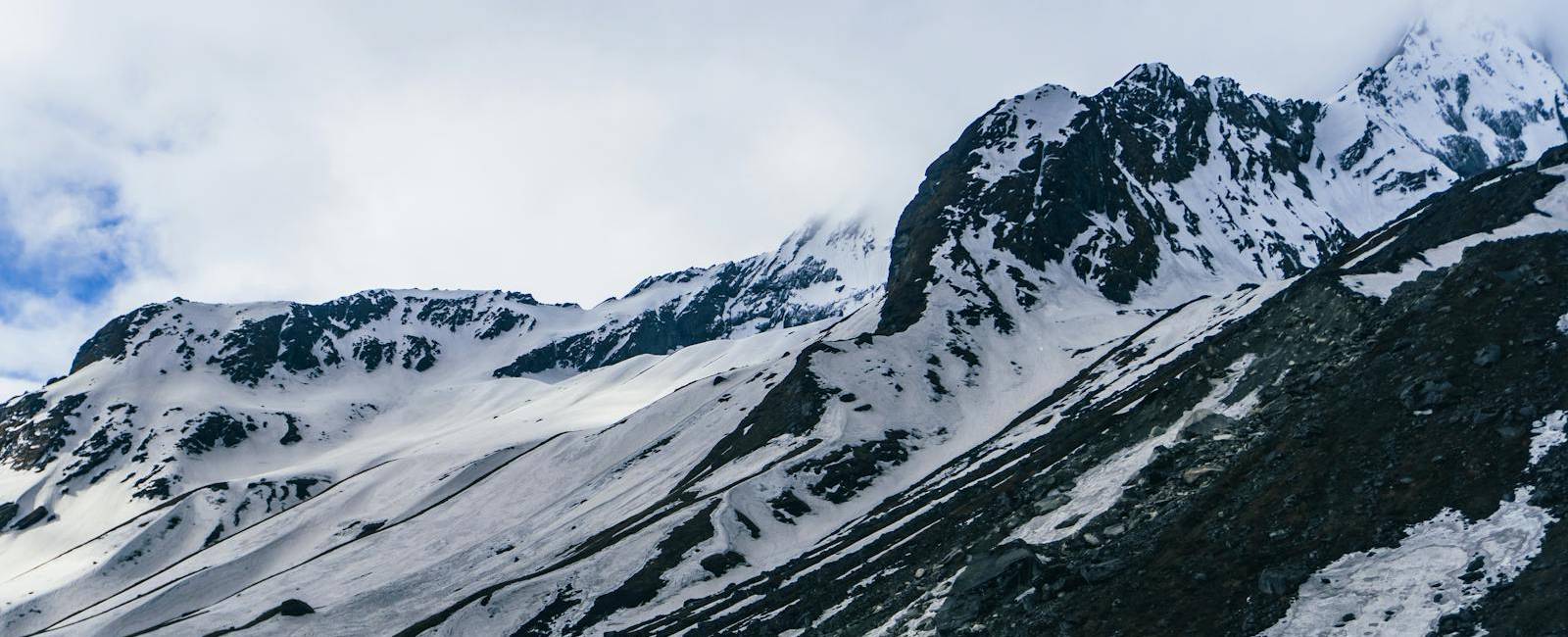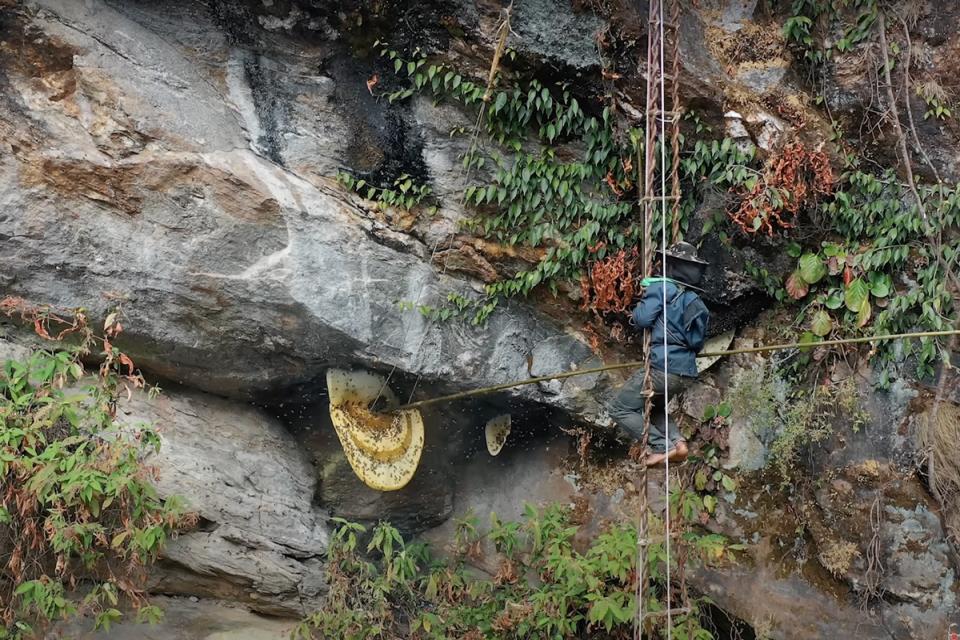Hidden among the cliffs and ridges of Nepal’s remote hillsides lies a tradition as daring as it is mesmerizing - mad honey hunting. This ancient ritual, performed by indigenous tribes like the Gurung people, involves climbing steep cliffs to collect honey from massive wild bee colonies. But beyond the thrill and folklore, one question continues to surface: Is the honey hunting tour in Nepal safe for travelers?
The short answer is yes - if you go with an experienced, reputable guide. Honey hunting is a dangerous and sacred tradition, but the tours designed for travelers are crafted with safety, ethics, and immersion in mind. In this in-depth guide, we’ll explore everything you need to know from the culture and history behind this wild harvest, to the risks, safety practices, locations, and why it’s worth experiencing firsthand.
What Is Mad Honey Hunting?
Mad honey hunting is the age-old practice of harvesting wild honey produced by the Apis dorsata laboriosa, the world's largest honeybee. Found on cliff faces high in the Himalayan region, these bees create honey that’s unique and even psychoactive due to the rhododendron nectar they feed on.
This honey, known locally as “red honey” or “mad honey,” contains grayanotoxins that can cause hallucinogenic effects when consumed in small doses. Traditionally, it has been used for medicinal and ritualistic purposes: treating hypertension, arthritis, diabetes, and even as a spiritual aid during ceremonies.
The hunt itself involves scaling vertical cliffs using handmade bamboo ladders, navigating aggressive bees, and smoking the hives while balancing on precarious ledges. It’s dangerous, visually striking, and deeply tied to the culture and belief systems of Himalayan communities.
The Cultural Significance of Honey Hunting in Nepal
The honey hunting culture in Nepal is not merely a means of sustenance, it’s a sacred ritual woven into the fabric of indigenous life. Among the Gurung and Magar ethnic groups, the honey hunt is performed with prayers, offerings, and blessings to the forest spirits and bee gods before the harvest begins. It represents spirituality, manhood, and communal identity.
In many villages like Naya Gaun, Bhujung, or Ghale Gaun, elders still teach younger generations how to craft ropes, ladders, and smoke tools. Songs are sung before and after the harvest, honoring ancestors and the bees for their gifts.
As modernization spreads and younger generations migrate to cities, this tradition risks fading into myth. This makes ethical tourism more important than ever - visiting as a respectful observer helps preserve and empower these communities.
What Makes Traditional Honey Hunting Dangerous?
The honey hunting itself is extremely risky for local participants. Here’s why:
1. Cliff Climbing Without Modern Gear
Most hunters use traditional tools: hand-woven rope ladders, wooden harnesses, and bamboo poles. There are no helmets, harnesses, or backup ropes. Slipping from a wet ledge could mean severe injury or death.
2. Aggressive Giant Bees
Apis dorsata laboriosa is not your regular honeybee. They are fast, defensive, and attack in swarms. Multiple stings are common and can be life-threatening for those with allergies.
3. Smoke and Fire
To distract the bees, hunters create thick smoke by burning leaves. While effective, it poses a danger due to disorientation and respiratory stress during the climb.
4. Remote Locations
Honey hunting takes place in rugged, isolated cliffs where medical help is hours or even days - away. In the event of a fall, allergic reaction, or injury, there are limited resources for emergency response.
5. Weather Unpredictability
Sudden rains or strong winds can make already perilous cliff climbs even more treacherous. Weather plays a crucial role and is carefully monitored before every hunt.
Is Honey Hunting Tour in Nepal Safe for Tourists?
Yes, honey hunting tours are safe for tourists - provided you book through a certified and experienced operator like Best Heritage Tour. These tours are designed to let you observe, learn, and participate safely without facing the dangers that local hunters endure.
Here’s What You Can Expect as a Tourist:
-
Watch from a Safe Vantage Point: You’ll be positioned at a secure distance, offering excellent visibility and safety.
-
Photography and Filming: Capture close-up shots using zoom lenses without disrupting the ritual.
-
Cultural Interaction: Talk with the hunters, learn about tools, rituals, and their spiritual relationship with bees.
-
Optional Participation: In some tours, you may choose to help prepare ropes or even assist under strict supervision but climbing is never required.
These tours are crafted for educational and immersive experiences, not adrenaline-based cliff climbing. The danger is real for locals, but managed carefully for guests.
Safety Measures We Take at Best Heritage Tour
When you book a honey hunting tour in Nepal through us, safety and cultural respect are our top priorities. Here's what we guarantee:
1. Trained Guides and Coordinators
All our staff are locals with deep cultural knowledge and first-aid training. They ensure you're well-prepared, informed, and cared for throughout the journey.
2. Pre-Tour Briefings
You’ll receive full orientation before entering honey hunting zones: what to do, where to stand, and what to expect.
3. Distance and Gear
We position observation points at a safe, comfortable distance. In select cases where short walks are required, we provide walking poles, helmets, and advice.
4. Emergency Preparedness
We carry first-aid kits, allergy medications, and have backup transportation ready in case of medical need.
5. Sustainable and Ethical Practices
We never exploit or interfere with rituals. Instead, we follow a community-first model where locals lead, educate, and benefit from tourism directly.
Top Honey Hunting Places in Nepal
Several regions in Nepal still actively practice honey hunting, particularly in the mid-hill and Himalayan zones. These are the top spots to explore:
1. Lamjung District - Ghale Gaun and Bhujung
These villages are among the most famous and accessible honey hunting destinations. Located near Pokhara, they offer rich culture, stunning views, and seasonal hunts. Accommodations are homestay-style, offering genuine local interaction.
2. Kaski District - Near Annapurna Foothills
Ideal for short treks, Kaski offers honey hunting within a 2-3 day trip. You’ll experience rhododendron forests, Gurung villages, and wildlife on the way.
3. Rukum and Rolpa
These remote areas in western Nepal are known for their dramatic landscapes and untouched culture. Honey hunting here is less commercial and more traditional, but access is more rugged and requires longer travel time.
Is Mad Honey Legal and Safe to Consume?
Yes, in small amounts. Mad honey is legal in Nepal and can be purchased during tours. It is considered medicinal in local culture, used to treat hypertension, sexual dysfunction, and sleeplessness. However, its hallucinogenic properties mean it must be consumed cautiously.
Tips for tasting mad honey safely:
-
Only try a small teaspoon at first.
-
Avoid consuming on an empty stomach.
-
Refrain from combining it with alcohol or strong medications.
-
If you have heart or blood pressure issues, consult your guide before tasting.
Mad honey is not illegal to bring home in small quantities, but always check your country’s customs regulations before doing so.
Who Should Join a Honey Hunting Tour?
-
Vloggers/YouTubers: The visuals are unmatched - cliff-side action, chanting villagers, and golden honey dripping from giant hives.
-
Adventure Tourists: Those who’ve done the typical treks and want something raw and real.
-
Cultural Explorers: Ideal for travelers who are passionate about indigenous knowledge, forgotten rituals, and community engagement.
-
Researchers and Nature Enthusiasts: Especially those interested in ethnobotany, bee biology, and traditional medicine.
Conclusion: Is Honey Hunting Tour in Nepal Safe?
The honey hunting culture in Nepal is one of the last living links to ancient Himalayan life. It’s bold, raw, mystical and yes, potentially dangerous for those who live it. But for travelers, it’s a safe and awe-inspiring cultural adventure when done with a licensed, experienced provider.
You won’t be scaling cliffs. You’ll be standing back with a warm cup of tea, watching brave men dangle on ropes to retrieve nature’s wildest nectar, as prayers echo through the cliffs. It’s spiritual. It’s cinematic. It’s real.
Book Your Honey Hunting Adventure with Confidence
Best Heritage Tour is one of Nepal’s most trusted cultural tour operators, offering safe and immersive honey hunting packages guided by local experts.
Visit: www.bestheritagetour.com
Phone/Whatsapp: +977-9851149197
Email: info@bestheritagetour.com / bestheritagetour@gmail.com
Office: Thamel Marg, Kathmandu, Nepal
Step into the unknown and experience one of Nepal’s most thrilling traditions - safely, respectfully, and authentically.
Author: Best Heritage Tour
Date: 30th July, 2025


